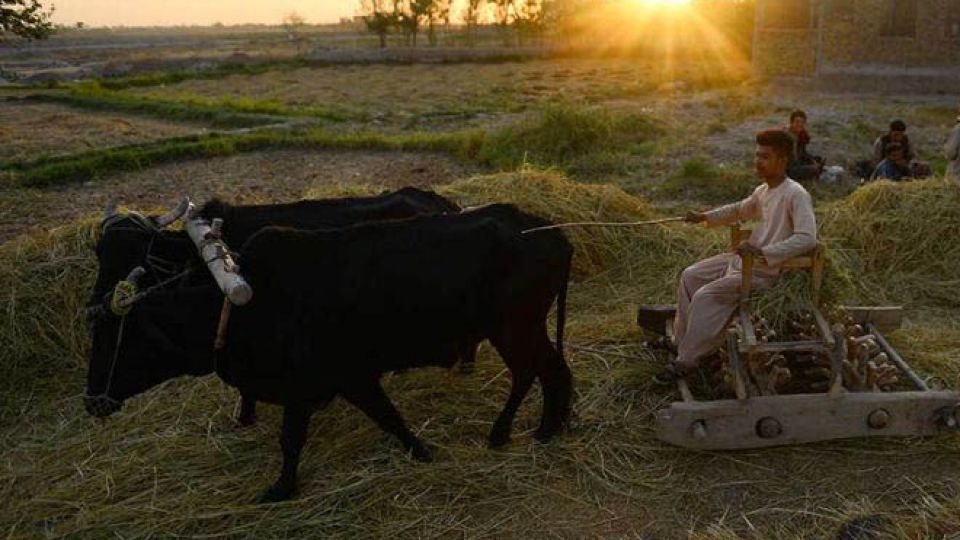April 12, 2022
PHNOM PENH rrr- A few weeks ago, we all woke up to a global milieu that we thought belonged to history.
Billions of people have already struggled through the last two years; acute hunger skyrocketed and the threat of famine once again returned.
Now, with war impacting a major global breadbasket that supplies many regions with staple food exports, international food commodities markets – themselves already suffering a stiff hangover after two years of the pandemic’s knock-on effects – are being disrupted even further. Countries around the world are coming to grips with the fact that our interconnected global economy and planet-spanning food supply chains are more fragile than we thought.
The UN agency for which I work, the Food and Agriculture Organisation (FAO), has analysed the varied threats to food security, in detail. Across the world, countries that rely on food imports are worried – rightly so.
But we are also obliged to highlight the plight of those people and nations who’ve already been – many for years – contending with food crises. That millions of people – often in rural, agricultural areas – are contending with high levels of hunger and food insecurity, no longer able to get a crop in the ground, unsure of where their next meal is coming from, perhaps selling off hard to replace assets like livestock or tools – in essence, their futures – to buy one more week of food.
Even before the war in Ukraine, the numbers of people suffering food insecurity across our fragile and interconnected planet were already staggering.
The international community was already – year after year – spending more on humanitarian aid in a desperate bid to stem the human misery. Contributions to provide food aid to keep people on a lifeline grew from $3.6 billion 10 years ago to nearly $8.5 billion last year.
Yet despite record humanitarian spending, nothing has stemmed the seemingly inexorable upward march of acute hunger, as measured on the Integrated Food Security Phase Classification (IPC) scale. In 2016, 108 million people were hit by IPC3 (crisis) and IPC4 (emergencies) levels of acute hunger. That has now climbed to more than 160 million people.
Now, surging prices threaten to raise the food import bills of scores of countries and push up the number of people who do not consume enough caloric energy to live normal lives, by as many as 13 million people during the course of just this year.
Yes, we are compelled to witness what is unfolding in Ukraine, but nor can we turn a blind eye to the need that envelopes so many other places.
In FAO’s experience, responding to needs is most effectively done when the very people impacted by a disaster or emergency are given choice and control. That is why now – today – before the warmth of spring blankets large swathes of the globe, nudging the soil back to life – we must plant the seeds of a food revolution, in every corner of the globe where acute hunger remains a scourge. We need to empower people to establish a thousand breadbaskets – a decentralised safety net to buoy up the human family.
Based on our work at FAO we know that farmers are tough. If they have the means, they will grow food to feed their families and communities. And this is precisely what they are asking of us, and doing so could not be more important than it is right now, as the ripples of the war affecting the Black Sea breadbasket travel far and wide and raise the stakes for the world’s hungriest communities
It does not take much. A 20kg sack of wheat seed. One hour of a hired tractor’s time. Delivered at the right moment.
The return on investment in agriculture – even in difficult situations – cannot be denied. In Afghanistan, for example, FAO wheat packages (seeds, tools and fertilisers) delivered last fall during the midst of political upheaval are now in the ground, and later this year will be bearing fruit, providing the average family of seven with enough staple flour for a full year.
That’s less than one-quarter of the $1,000+ it would cost to purchase the same amount of grain in the local market (at November 2021 prices) or importing it from now-stretched global markets. This is just one example of the strategic humanitarian investment that is agriculture.
In December, a global humanitarian appeal for an unprecedented $41 billion was launched with the aim of assisting 183 million of the world’s most vulnerable people. The gap between the requirements and money available also grew to almost $19 billion (compared with $11 billion in 2019), with less than half of funding needs received in 2021.
Today we are bracing for the ripple effects of the war in Ukraine on crises elsewhere in the world. Every single dollar simply must have maximum impact. FAO estimates that for just $1.5 billion, we can provide immediate life- and livelihood-saving agricultural assistance to about 50 million people, enabling them to produce food right where it is needed most.
Urgent agricultural activities will feed more people, for less money. Saving livelihoods saves lives.
Spring is here. No time to waste.
Rein Paulsen is director of the Office of Emergencies and Resilience at the UN Food and Agriculture Organisation (FAO)


